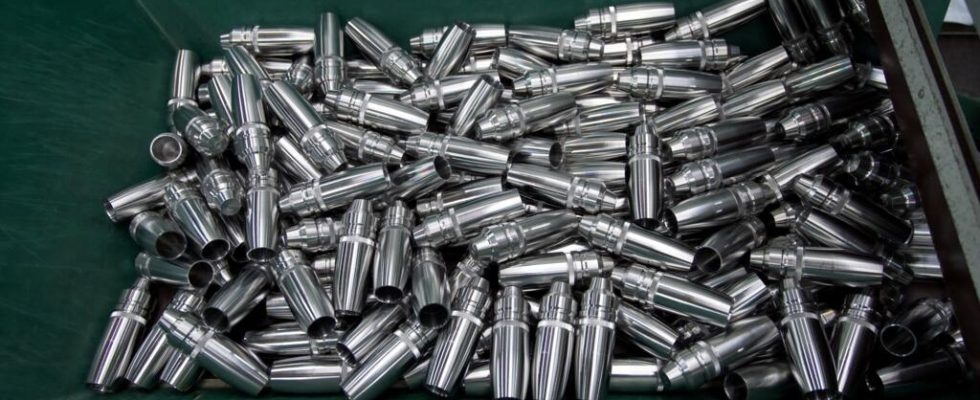The war in Ukraine is also being played out in central France. It is near Bourges that the Nexter group manufactures the 155 mm shells for the Caesar guns. Large-caliber shells have become a sought-after commodity since the start of the Russian invasion of Ukraine. To meet European orders for kyiv, the French manufacturer has undertaken to increase its production capacity.
At the entrance to the factory, a sign indicates 132 days without work accidents. No gap possible with safety, insists Hervé Le Breton, site manager, and it is moreover an automated robot arm which handles the handling of the shells. “ We are therefore in the area where we are going to machine the body of the shell. At the end of this machine, we have a shell that is finished, machined, ready to be painted “, says Hervé Le Breton.
To meet an exponential demand for ammunition, the machine works in three shifts, including Saturdays and probably soon on Sundays, blows workshop manager François Astruc. ” We have two towers in parallel and we must obtain a belted shell body in less than 10 minutes. So there, the robot will take the part from post to post. 10 kilos of explosives are loaded into the shell body “, he says. Hérvé Le Breton continues: “ The explosive is going to look like pancake batter when it’s liquid, so we’re going to pour it inside the shell. Afterwards, this explosive, to initiate it, we will put the bread which will serve as an amplifier for the detonation. »
► To read also: France to supply 12 additional Caesar guns to Ukraine
Unique know-how
To produce more, Nexter is recruiting, but it will take months to train the workers, there are no pyrotechnic schools in France. Everything is based on unique know-how. Yoann Renon, for example, is a specialist in compressing the layers of explosives housed in shells.
“ The principle is going to be to take explosive in granular form which we will put in a big barrel filled with oil at 140°C. We are going to come up to 2 000 bars “, explains Yoann Renon. “ So in fact, we recovered gun number 7 from the battleship Richelieu, which is a French ship from the Second World War. We kept the part that could store the greatest energy charges. We kept the original 1.5 ton cylinder head and we are going to fill it all up, we are going to come and inject the 2 000 bar pressure. Under the effect of heat and pressure of 2 000 bars, all the grains will shrink until they form a block that will be uniform and homogeneous, above all. »
The ambition to double production
Last July, France urgently placed an order for 5,000 155 mm shells, which had not arrived for years and a second order has just arrived this time for 16,000 pieces, others should follow , but Guillem Monsonis, director of communication for the Nexter group, wonders how to keep up with the times, when certain shortages of critical products appear.
“ The propellants, very clearly. This is the reason why there is a project to set up a French sovereign sector. The identification of these critical paths, for example, led to the decision to open a second heavy-gauge belting unit. And there, it is something that is in progress, so we are going to double this capacity to resize the tool to match the challenges. »
And to be up to the challenges, Nexter aims to double its production, 100,000 155 mm shells per year within two years. Production, however, bears no relation to the pace of a high-intensity conflict, which consumes several thousand shells every day.
